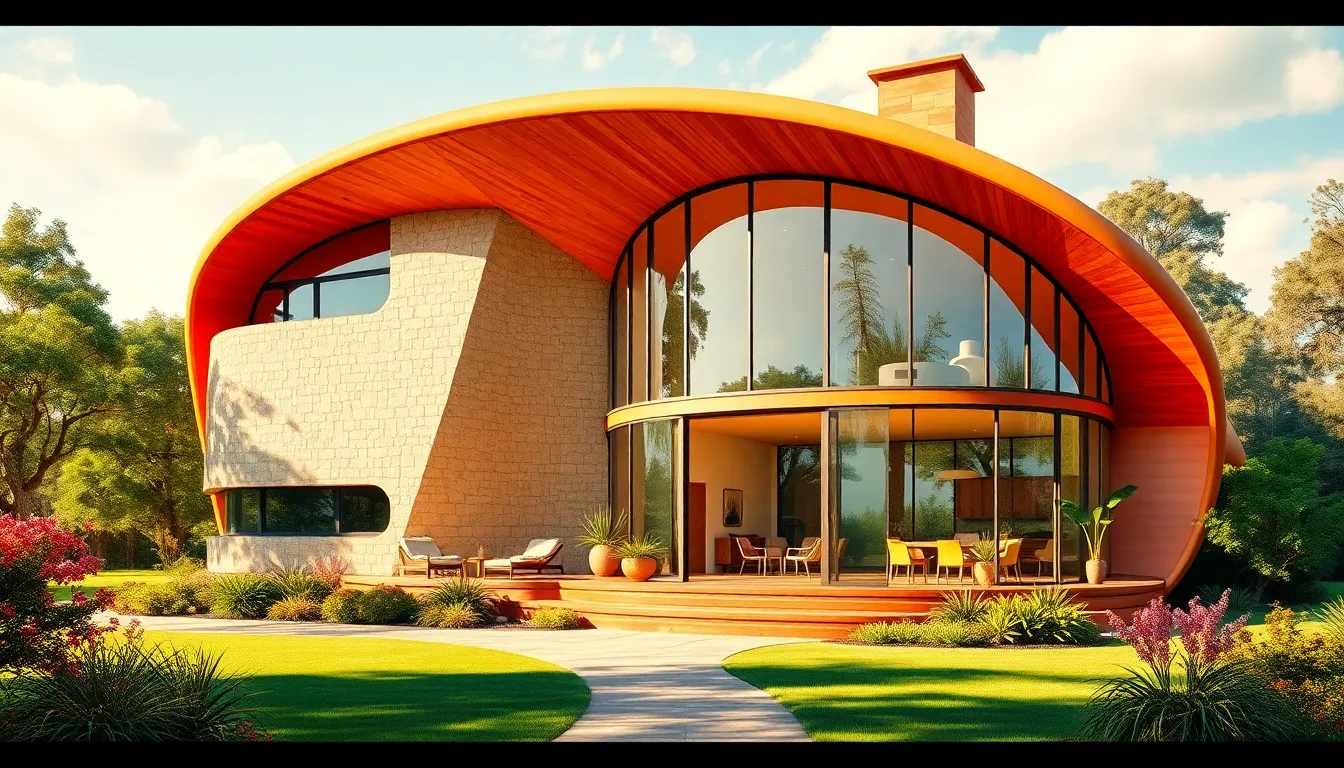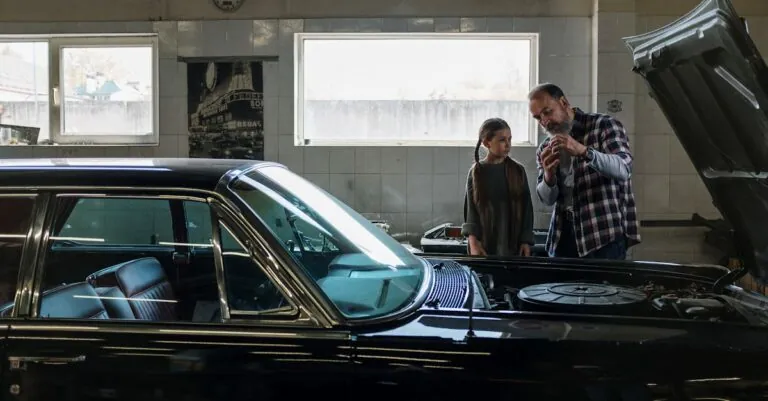Table of Contents
ToggleStep back in time to the groovy 1970s, a decade that redefined architectural norms and infused structures with unmatched personality. From earth tones to geometric patterns, the era’s designs often pushed the boundaries of creativity. Think of it as an architectural party, where every building flaunted its uniqueness like a disco ball reflecting vibrant colors. In this exploration, we’ll jump into the defining features, popular movements, and the significant figures that shaped the landscape of 70s architecture. Get ready to embrace the funky vibes and discover why this era remains a beloved touchstone in architectural history.
Defining Characteristics of 70s Architecture

The 1970s were anything but boring when it came to architecture. One could describe the decade’s style with a blend of bold curves, vibrant colors, and a penchant for mixing materials. Concrete, wood, and glass often danced together in an unexpected harmony, marking a significant departure from the rigid forms of previous decades.
Embrace of Natural Forms
Buildings from this era displayed a notable tendency toward organic shapes. Architects took a page from nature, crafting lines and forms that resembled the flowing curves of rivers or the waves of the ocean. The idea was to create spaces that felt alive, inviting inhabitants to connect with their surroundings.
Colorful Aesthetics
Gone were the muted palettes of the 60s. Instead, burnt oranges, avocado greens, and mustard yellows burst forth, capturing the essence of a decade that celebrated individuality and freedom. These colors weren’t just splashes on a wall: they often painted entire buildings, showcasing a vivid statement that set each structure apart.
Open Floor Plans
Another hallmark of 70s architecture was the shift towards open floor plans. Homes and commercial spaces alike prioritized fluidity and connectivity. Walls were pushed back, allowing light to flow generously through living areas. This open concept invited people to gather, fostering a sense of community and openness that mirrored the era’s social movements.
Popular Styles and Movements
In the rich tapestry of 70s architecture, several styles stood out, each carrying its unique flair.
Brutalism
While often seen as austere, the Brutalist movement made waves during this decade. Characterized by massive concrete structures, it evoked feelings of strength and permanence. Even though its intimidating appearance, many found beauty in its functionality and raw materials.
New Age Architecture
This style emerged from the desire for spirituality and harmony with nature. Structures often featured asymmetrical forms, cantilevers, and integration of outdoor space. Buildings like the famous Baha’i Temple in Chicago exemplify this movement, showcasing circular designs with stunning, intricate patterns.
Postmodernism
As the decade progressed, a reaction against the severity of Modernism took place. Postmodern architects began to inject humor and irony into their designs. Colorful tiles, whimsical shapes, and unexpected details turned buildings into playful sculptures, making the ordinary extraordinary. The Piazza d’Italia in New Orleans is a prominent example, attracting visitors with its vibrant colors and eclectic shapes.
Influential Architects of the 1970s
The 1970s wasn’t just about the style: it was also about the visionaries who brought those concepts to life.
Robert Venturi
Known for his approach that celebrated complexity, Venturi’s work challenged the clean lines of Modernism. His book “Learning from Las Vegas” criticized the dullness of conventional architecture and encouraged a revival of ornamentation and symbolic references in design.
Louis Kahn
A titan of architectural thought, Kahn’s buildings, like the Salk Institute, exemplified his belief that architecture should speak to the human experience. His bold use of light and shadow created a dialogue between the indoors and outdoors.
Moshe Safdie
Emerging as a young architect in the 70s, Safdie’s work, particularly Habitat 67 in Montreal, showcased innovative housing solutions through concrete modular units. His designs often focused on sustainable living and communal space, paving the way for future housing developments.
Cultural Impact on 70s Architecture
Architecture does not exist in a vacuum: it reflects the cultural zeitgeist of its time. The 70s were marked by social upheavals, environmental awareness, and a celebration of diversity, all of which significantly shaped architectural trends.
The Counterculture Movement
As a hotbed for counterculture, the 1970s inspired a move towards buildings that embraced individuality and diversity. Architects began to incorporate elements that spoke to the people, from murals reflecting street art to community-centered design principles.
Environmental Movement
With a growing concern for the environment, architects began to recognize their responsibility toward sustainability. This led to the formation of eco-friendly designs, often integrating natural materials and outdoor spaces within their projects. Such awareness laid the groundwork for future green architecture.
Sustainability and Environmental Design
As awareness of environmental issues began to resonate in society, architecture started to pivot towards sustainability. In the 1970s, many architects began knitting together ecological principles with modern design.
Use of Local Materials
A notable shift towards using locally sourced materials burgeoned in this decade. By doing so, architects not only reinforced community identity but also reduced transportation footprints, two wins in the race against environmental degradation.
Energy Efficiency
Incorporating passive solar designs and energy-efficient systems became hot topics among architectural innovators. Designing buildings to harness sunlight effectively or maximize natural ventilation illustrated a growing consciousness about energy consumption and its consequences.
Legacy and Preservation of 70s Architecture
As with any era of architectural creativity, the 1970s left a unique legacy, and preservation efforts have become paramount.
Shift in Preservation Attitudes
Initially, many viewed 70s buildings as outdated or unworthy of preservation. But, with time, architects and historians recognized their significance. Buildings that once seemed eccentric are now appreciated for their innovation and cultural narratives.
Revival of Interest
In today’s architectural discourse, there is a noticeable revival of interest in 70s design principles. Elements such as open spaces, integration with nature, and bold aesthetics are making a comeback as modern architects seek to weave history into new projects.





